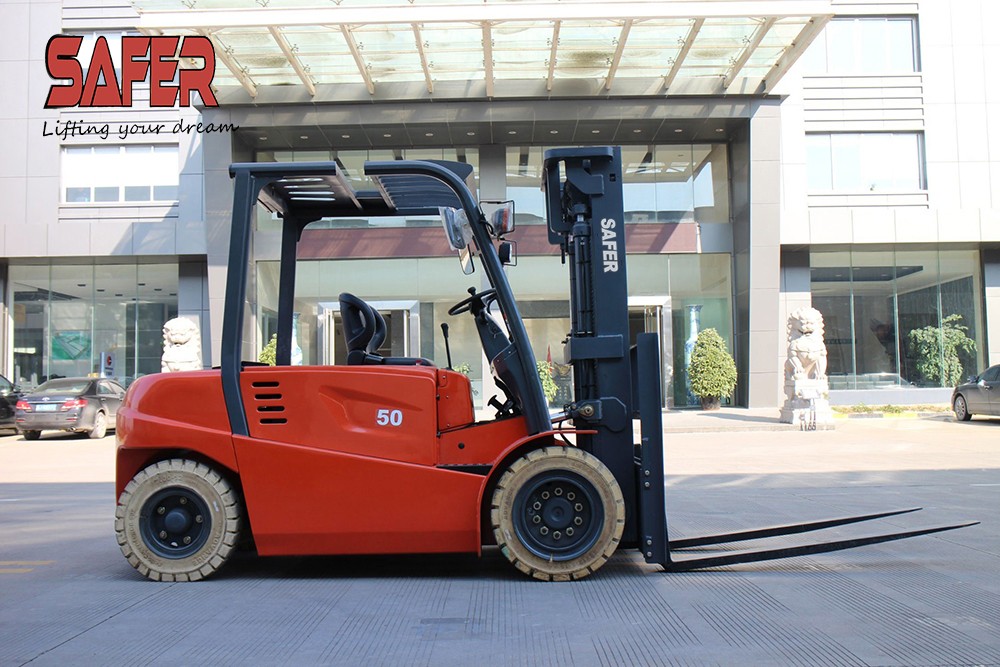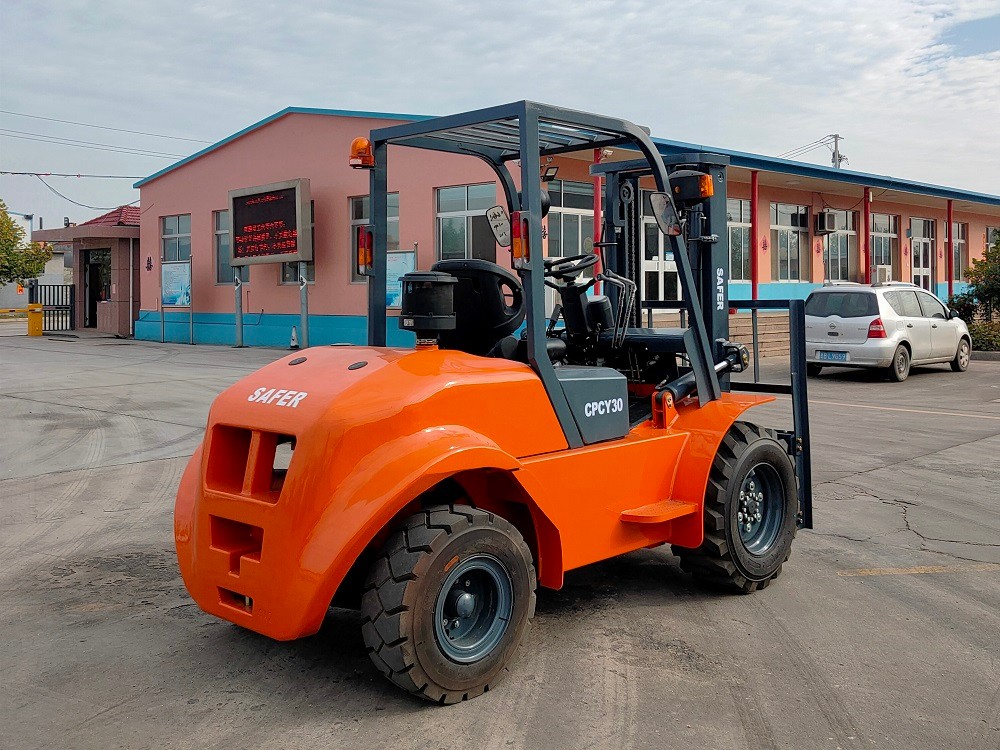Castor oil-alcohol brake fluid is no longer necessary. The mineral oil brake fluid is now deactivated with synthetic brake fluid. Synthetic brake fluid is widely used. It is made of ether, alcohol, ester, etc., which is blended with smoothing, anti-oxidation, anti-rust, anti-rubber swelling and other additives. It has a wide working temperature range, easy to flow at low temperature, sensitive braking, high boiling point, and low transpiration loss at high temperature. It is not easy to produce gas and is irritating, and it is widely corrosive to metal parts and rubber parts, so it is widely used.
1. Four-wheel drive forklift requirements for brake fluid function
(1) Outstanding low temperature function: If the fluidity of the brake fluid is low, the fluid will be poorly condensed, which will cause the pipeline, pump, etc. to block. When braking, the brake pedal will be hard and can not be braked. It is generally required that the brake fluid does not condense at -40 ° C and flows freely.
(2) Appropriate viscosity: excessive viscosity, poor low-temperature fluidity, and reduced braking function; if the viscosity is too small, reliable smooth and simple leakage cannot be supplied in a high-temperature environment. In order to ensure that the brake cylinder and the rubber cup slide well, the brake fluid is required to have an appropriate viscosity.
(3) The boiling point should be high: the forklift frequently travels and reverses during each working cycle, and the brake friction plate is in a braking condition for a long time, so that the temperature of the brake system is raised. For example, if the brake fluid with low boiling point and easy to transpiration is used, Part of the brake system will be filled with brake fluid vapor, causing gas anger and causing brake failure. Therefore, the brake fluid should have a higher boiling point (the dry boiling point is the boiling point of the brake fluid without moisture, the wet boiling point is the boiling point of the brake fluid containing certain moisture), and the lower transpiration to reduce the onset of air resistance. .
(4) Good corrosion resistance: In order to ensure that the brake fluid will not corrode metal pipelines and components for a long time, it is required to add rust inhibitor to the brake fluid.
(5) Outstanding chemical stability: The brake fluid is applied at high temperature for a long time, and it is required to make the oil thicken without causing thermal differentiation and coincidence, and it is also not allowed to form sludge deposits.
(6) The influence on rubber is small: there are many rubber seals in the brake system. In order not to reduce the mechanical strength and elasticity of the rubber seals such as the brake cup, the brake fluid is required to have a small influence on the expansion rate of the rubber. Avoid skin immersed in the brake fluid for a long time, and the intensity, volume and quality of the attack will change.
2. Use brake fluid precautions
(1) Pour a small amount of brake fluid on the palm of your hand. The true brake fluid will generally feel a little cold first. After a while, it will feel a little hot, and the brake fluid will not simply evaporate. If you feel the brake fluid is abnormally cold, and it will Slowly volatilize, it is likely to be a false brake fluid.
(2) Before changing the brake fluid, the oil, dirt, etc. at the filling port and bleed screw of the brake system must be cleaned and cleaned to prevent impurities from entering. The brake system should be cleaned in accordance with the rules of the protection manual, and the brake system should be cleaned with the same type of brake fluid. It is best not to use alcohol or detergent.
(3) Brake fluid has certain toxicity and cannot be taken with your mouth.
(4) The brake fluid has a damaging effect on the coating on the surface of the vehicle body, and a "biting phenomenon" may occur. Therefore, when replacing and filling, beware of the brake droplets falling on the coating of the body.
(5) It is forbidden to mix and use with other brake fluids. When mixed, it will show turbidity or sedimentation, which will not only greatly reduce the function of the original brake fluid, but also deposit particles will block the serious consequences of brake failure. Even brake fluids of the same type with good compatibility cannot be mixed if the brands are different. Because of the good compatibility, it only clarifies the phenomenon of delamination, turbidity and sedimentation after mixing with other products. It does not mean that the functions after mixing are unchanged. Each product participates in different additives and there is a relative balance between them. Once mixed with other substances to break the original balance, the original function will be lost. Therefore, when replacing brake fluids of different grades, it is necessary to clean the pipeline with the products to be participated.
Pre:Construction machinery maintenance 10 "no", who did it?
Next:Tips for reducing the cost of forklifts easily and easily



